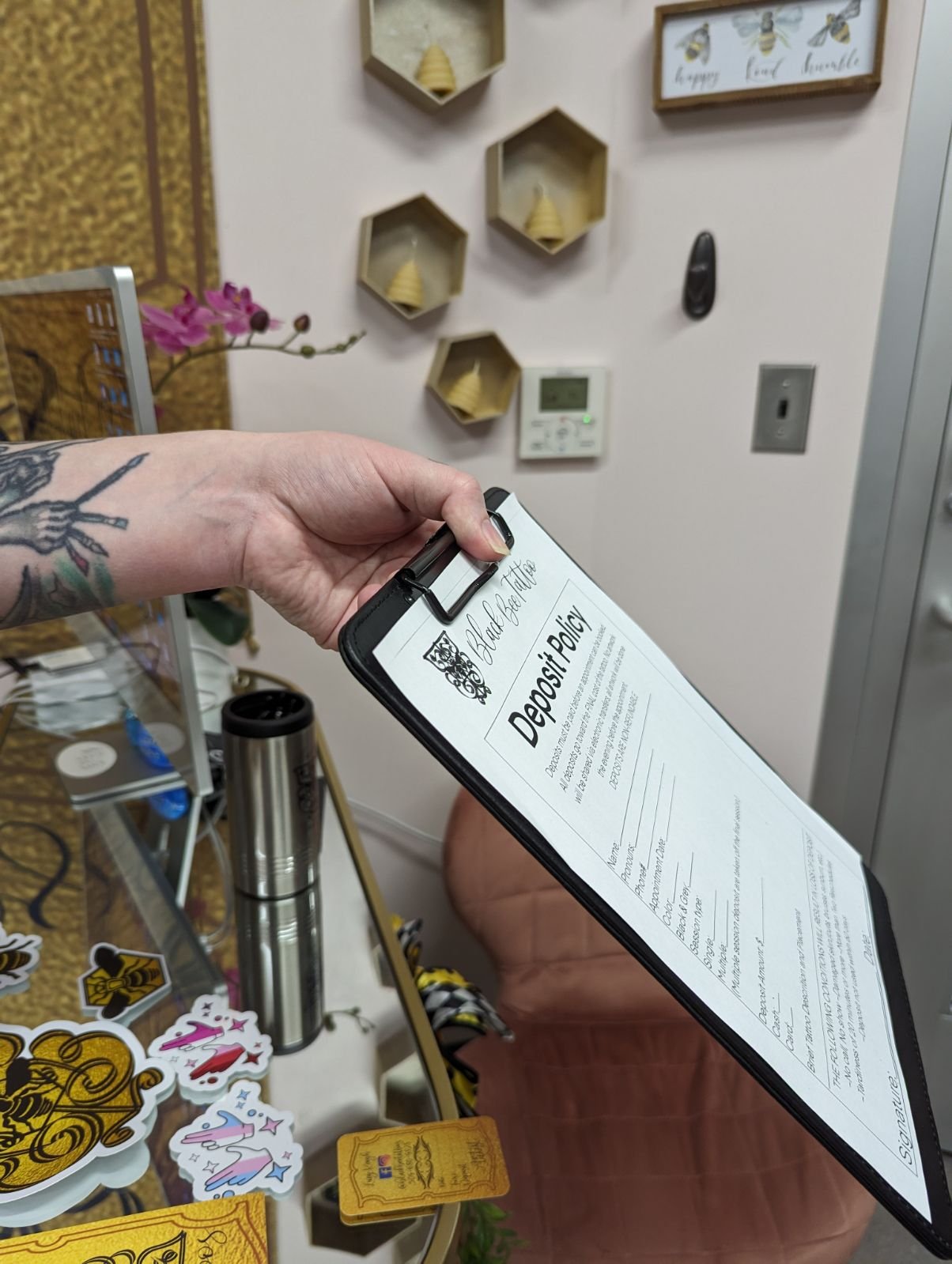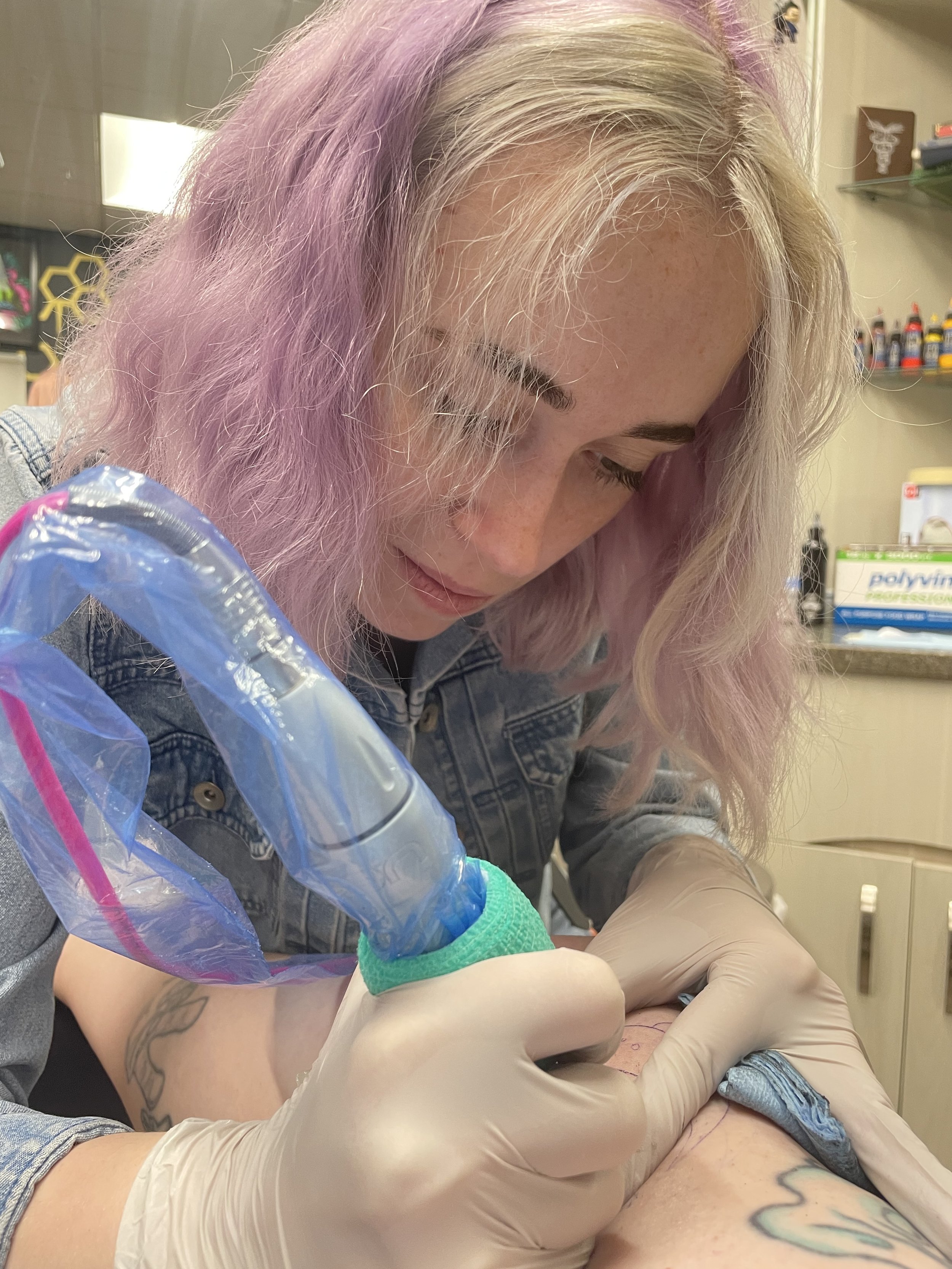How the Tattoo and Piercing Process Works
Whether it’s your first tattoo or your 50th we’re here to make sure your experience is comfortable and fun
Here at Black Bee we understand that the tattoo and piercing process varies for everyone which is why we give our clients the choice of when and for how long they want to get tattooed. No pressure here.
First a consult is made, where we will go over your design ideas and collaborate. After the discussions a $100.00 deposit is collected to secure your tattoo appointment.
Piercings appointments do not require a deposit.
Next is time for the fun stuff! You, the client, chooses the day that works best for you and upon appointment day final adjustments are made to ensure a shared vision. Once the client is satisfied the tattoo or piercing begins!
You made it! Now it is time for us to explain the aftercare process and answer any lingering questions you may have. But our friendship doesn’t end there, schedule a touch up appointment for tattoos or a jewelry downsize appointment for piercings on us to make sure everything is as great as it can be. Welcome to the cool kids club.
Piercings For Minors
Piercings for minors are allowed per Washington State law, however there are additional steps and documentation required for this process. All minor piercings require a consult appointment, and at least 2 days before the appointment itself to give you, the parent or guardian, and the minor additional time to think about the appointment. It is helpful to bring any questions you have to this consultation.
What piercings are allowed for minors?
8-12 years old: Earlobes
13-15 years old: Earlobes, helix, conch, and nostril.
16-17 years old: All of the above, plus daith, rook, forward helix, industrial, eyebrow, septum, tongue, lip, and navel.
What documentation is required for the appointment?
The parent or guardian’s:
State-issued ID or Driver’s License
Passport
Military ID
Tribal ID
Additionally, one of the following for minors:
8-12 year olds: A birth certificate or passport
13-17 year olds:
A School ID AND a birth certificate
State-issued ID or Driver’s License
A Driver’s Permit with photo
Passport
Military ID
Tribal ID
If the minor and parent/guardian do not have the same last names, additional documentation is required that establishes that the accompanying individual is the parent/guardian.
Documentation can include:
A birth certificate
A certified, court provided name change document. You can contact your county clerk to receive these, if you don’t already have one.
Legal guardianship papers
Adoption papers
Why do we use needles instead of a piercing gun?
A piercing gun presents several issues that a needle does not. A piercing gun is near impossible to adequately sterilize, which increases the chance of infection. We use single use needles, and medical equivalent sterilization techniques for tools and jewelry. Piercing guns also cause additional tissue damage, which can extend the healing process and time the piercing takes to fully heal.
Of course you as the parent/guardian have the ultimate say in how the minor is prepared for the process, however, through experience, we have found the following practices to be unhelpful:
Encouraging the minor to get a piercing before they are ready. If the minor is not certain they want a piercing, it can lead to excess stress and anxiety before and during the process.
Telling the minor that it will not hurt. It’s important to be real and upfront with the minor about how a piercing will feel. If they are expecting a pain-free experience, they will quickly realize this is not the case, and be inadequately prepared, which can cause the minor to have a stronger reaction to the piercing itself. Everyone experiences pain differently, however we generally liken the pain to something such as stubbing your toe—surprising and sharp, but passes quickly.



